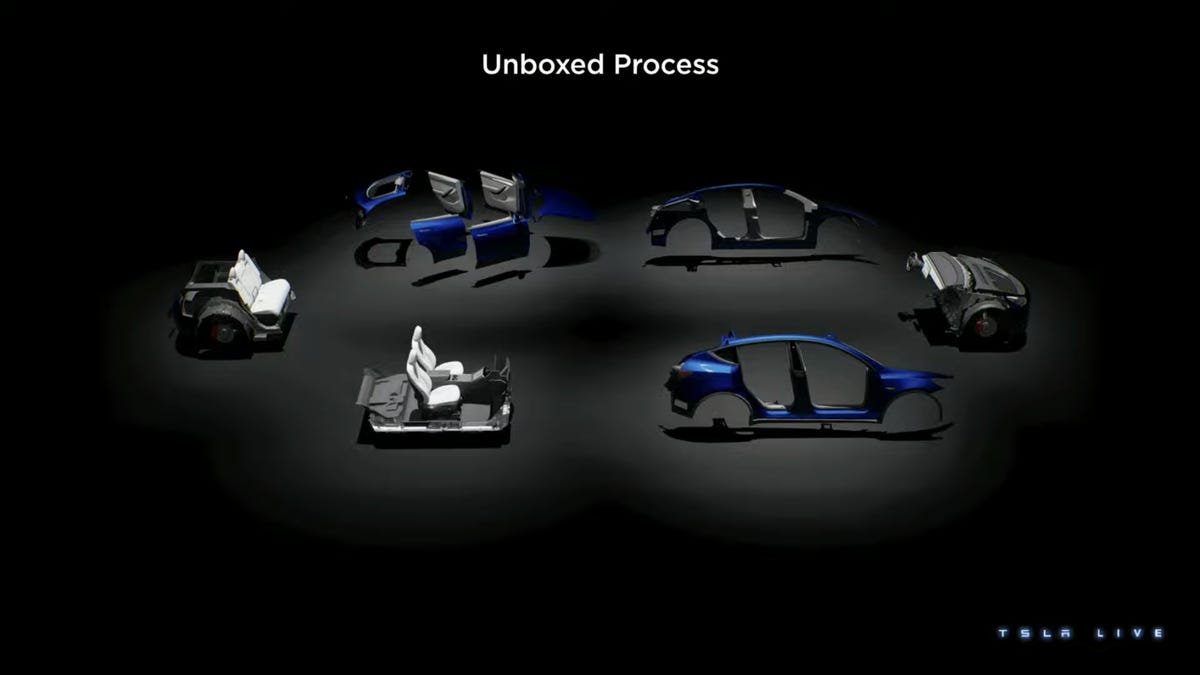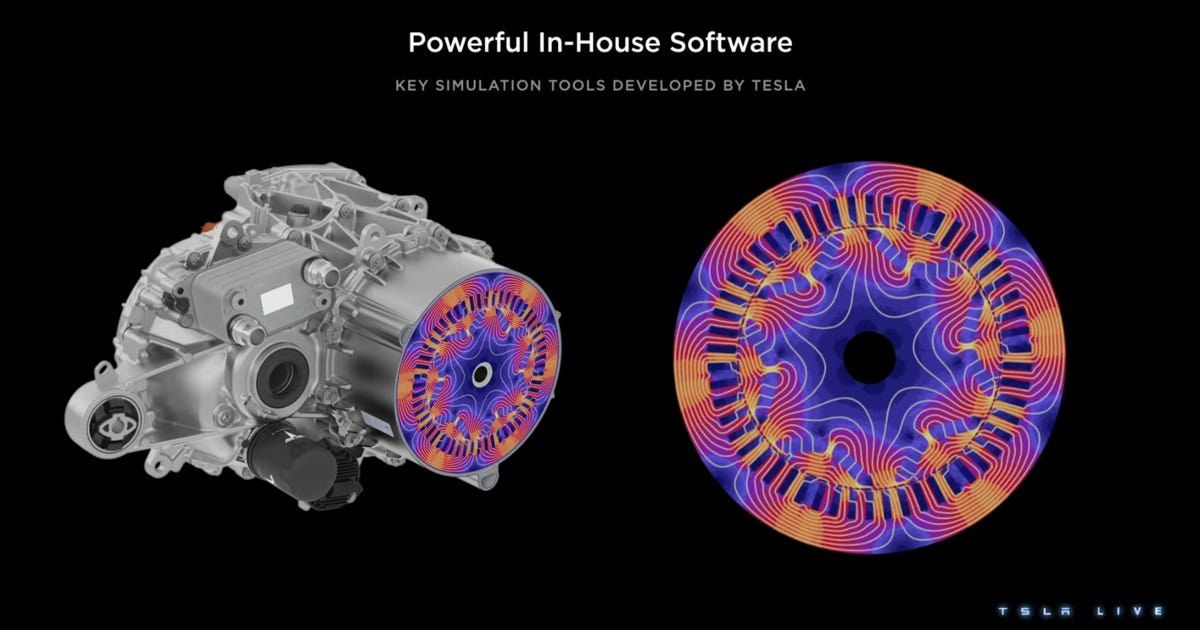Viewers of Tesla’s 2023 Investor Day stream hoping for more details about the upcoming Cybertruck or a glimpse at the rumored Model 2 were left disappointed. However, the electric automaker did tease details about how it’s its next-generation vehicle platform and electric motor, which promises to be more efficient and more affordable.
The automaker’s powertrain designers used in-house developed software to simulate the interaction between the magnetic fields between the stator and rotor, optimizing the cost, weight and size and sound of the electric motor through rapid iterative design. They also worked closely with Tesla’s manufacturing engineers to make similar optimizations to the manufacturing process and materials.

The new drive unit will feature a permanent magnet design, but require no rare earth metals.
Tesla
Tesla says the next-generation powertrain will require 75% less silicon carbide to produce, without any compromise to performance or efficiency. Despite the new drive unit being a permanent magnet design, Tesla also says it will require zero rare earth materials. It’ll be more production-efficient, requiring 50% less factory floor space than the Model Y’s motor, and around $1,000 less expensive per unit to produce, which is important considering the vehicles built on this platform are expected to be the most affordable Tesla EVs yet.
The new platform will be compatible with any battery chemistry and will employ new production methods to streamline manufacturing. Tesla says that lessons it learned the hard way during the development of its oft-delayed Cybertruck inspired it to rethink the tradition series assembly line. Rather than the vehicle’s unibody chassis moving down the line as a whole, parts of the new model (sides, doors, floor, front and rear subframes) will be assembled on parallel lines, only coming together at the very end of the line.
Tesla says this “unboxed process” is more efficient, cost-effective and less prone to manufacturing bottlenecks. That last bit is especially important if Tesla wants to hit its goal of manufacturing 20 million EVs a year by 2030.

Rather than assembling the vehicle on a single line, component sub-groups will be assembled in parallel before being brought together much later.
Tesla
In addition to the high-voltage powertrain, the automaker is also rethinking the low-voltage power system, redesigning and reducing the wire harnesses that serve as the vehicle’s nervous system. It’s moving from 12 volts to a 48-volt architecture which (thanks to Ohm’s law) will enable lower current, smaller wires and components with smaller heat sinks, all of which helps save weight. Next, rather than a complex network of analog harnesses, Tesla is moving to a network of smaller controllers — also designed and built in-house — connected by ethernet to the vehicle’s powerful central brain. This will greatly reduce the number of wires snaking around the body and, thanks to bidirectional communication, simplify diagnostics and debugging.
Neither Musk nor other Tesla leadership presenting at the investor day commented on a timeline for the expected deployment of the next-generation platform, powertrain or the vehicle that will eventually host it.


